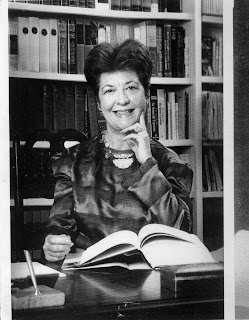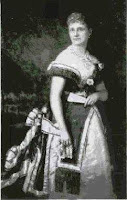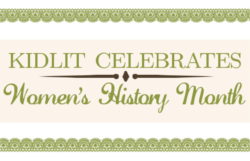March 21 - Today's post provided by Susan Casey
Shortly after starting to research and write Women Invent! Two Centuries of Discoveries That Have Shaped Our World, I realized I was entering a world I wouldn't be able to easily exit. As I read about Harriet Irwin, mother of nine, yes, nine, who in 1869 was the first woman in the US to patent an architectural innovation--a hexagonal house that eliminated sharp corners that are difficult to dust and clean--I was captivated.
Then, I discovered Mary Nolan had gained a patent for Nolanum--a hollow, fireproof, interlocking brick that could be used to make walls without plaster.
And I read that Rose Totino had invented frozen pizza! I could hardly contain my enthusiasm as I read about inventor after women inventor. And looking at their patents? Wow! Such amazing images. I suspected that most girls didn't know their stories. I hoped by relating them I could inspire girls to embrace and act on their own ideas. For example, In 1843 Nancy Johnson patented the first hand-crank ice cream maker. Who doesn't like ice cream? Couldn't a girl be inspired to think of an invention related to her favorite food?
Bertha Dlugi wanted her parakeets to have the experience of flying freely around her house but she didn't want to clean up after them. So she invented Diapers for Parakeets in 1959! Such a funny idea but in relating the story couldn't I inspire a girl to invent something for her pet?
It was the captivating stories and the chance to inspire young girls that propelled me as I wrote the book. Some of the stories of women inventors might encourage the creativity of girls you know. Here are a few:
Martha Coston
Martha Coston of Philadelphia was only 21 in 1847 when her husband, Benjamin, an inventor for the Navy, unexpectedly died of pneumonia. Alone, it was up to Coston to support herself and her four small children. Her invention efforts began when she found a notebook with her husband’s ideas for signal flares. He thought they could be used to communicate ship-to-ship or ship-to-land. But when she tested the models he had created they didn’t work. She kept at it, found a solution and in 1859, just before the Civil War, she patented a system of red, white and green “Pyrotechnic Night Signals.” The U.S. Navy bought the rights to the signals for $20,000 and awarded her the contract to manufacture them.
Carlotta Myers
Carlotta "Queen of the Air" Myers and her husband, Carl, were fascinated with hydrogen gas balloons. They staged demonstrations to support their research and gained a patent for guiding them. Carlotta made her first flight on July 4, 1880, at Little Falls, New York, as fifteen thousand people watched. Her companions were four carrier pigeons that she released to alert friends of her progress.
Amanda Jones was trying to communicate with her dead brother at a séance, when she claims she was told by her spiritual guide to become an inventor. Lucky for us. She and her cousin, Leroy J. Cooley, devised a vacuum process for preserving food. She started the Women’s Canning and Preserving Company in the 1890s and sold the ‘canned food’ nationwide.
Josephine Cochran
Josephine Cochran, inventor and entrepreneur, not only gained an 1886 patent for the first practical mechanical dishwasher in 1886, but through her company, Cochran's Crescent Washing Machine Company, she sold her dishwashers to Chicago hotels and restaurants during the 1893 Chicago's Worlds Fair. Her company eventually became part of KitchenAid.

Madam C.J. Walker
Madam C.J. Walker, the daughter of former slaves was born as Sarah Breedlove on a Louisiana cotton plantation in 1867, just two years after the end of the Civil War. As a child, she worked as a sharecropper in the cotton fields alongside her parents. Later, she worked as a washerwoman. Like many African American women of the day, she straightened her hair. When it began falling out, though, she invented a conditioning formula containing both shampoo and pomade, which she applied with a hot comb. The treatment worked. She started manufacturing and selling Madam C.J. Walker’s Wonderful Hair Grower and 16 other products by going door-to-door in the African American community giving beauty treatments as part of her sales pitch. She trained thousands of others, called Walker Agents, to sell her product as she did. She was the first female African American millionaire.

Hedy Lamarr
Living in Vienna just before the start of WWII, Hedy Lamarr, a film actress was married to Fritz Mandl, an Austrian armaments manufacturer. She accompanied him to gatherings and listened when he spoke with his colleagues about arms design and the topic of a radio-controlled torpedo. In 1938, as German forces invaded Austria, she escaped, headed for Hollywood and while under contract to MGM, met composer, George Antheil. The two came up with the idea of using a technology called "frequency hopping, " basically an unpredictable signal, to guide torpedoes. The signal was harder to detect or jam. The two gave their 1942 patent to the U.S. government and while it was not used during the war, the concept they outlined is used widely today for wireless internet transmission.
Rose Totino
Rose Totino, daughter of Italian immigrants who settled in Minneapolis, opened a take out pizza restaurant in the 1950s at a time when almost no one in the U.S. outside of New York or Los Angeles, had ever heard of pizza. It was a big success. After she invented a way to freeze pizza crust so that her customers could bake at home, she patented her idea: a method of freezing it so the crust was crisp. She started a company to sell it and Totino's Pizza became the top selling frozen pizza nationwide. Pillsbury took notice, purchased her process in 1975 for millions and made her the first female Vice President in the history of the company.
Maria Telkes
Maria Telkes who read everything she could about the sun not only in her native Hungarian but also in French, German and English went on to devise the first system for solar heating a home in 1948.
Bette Graham
Bette Graham just wanted to cover her typing mistakes but the other secretaries took one look at her fast drying paint and wanted some as well. She started selling it, first called it Mistake Out, and later renamed it as Liquid Paper. In 1979 Bette Graham sold the company to the Gillette Co. for $47.5 million.

Stephanie Kwolek
In 1971, while working as a chemist at Dupont, Stephanie Kwolek, invented Kevlar, a thread that is five times stronger than the same weight of steel, and is now used to make radial tires, airplanes, boat shells, protective gear for the military, and bulletproof vests.

Patsy Sherman
In the early 1950s while working at the 3M Co., Patsy Sherman and her co-worker Sam Smith were trying to create a new latex or kind of rubber for use in the fuel lines of the then-newly developed jet engines. Accidentally, some of the material spilled onto the tennis shoe of one of the technicians. When it dried, Sherman and others tried to remove it with soapy water and organic solvents. Nothing would even wet the spill. And the spot was cleaner than the rest of the shoe. "Sam and I thought, ‘Forget those aircraft hoses! Maybe there’s something bigger here,’” Sherman told me when I interviewed her for the book. The two developed the material into Scotchgard™, a fabric protector used worldwide. “The important thing to remember is that many of the world’s greatest discoveries were unplanned, like penicillin and the vulcanization of rubber," shared Sherman. "They came about strictly by accident but somebody was keeping their eyes open and their brain in gear. 'I tell girls, 'Trust your hunches. We’ve got a secret weapon called women’s intuition.’ It’s surprising how often it works out.”
Susan Casey, the author of Women Invent! Two Centuries of Discoveries That Have Shaped Our World and Kids Inventing! A Handbook for Young Inventors and, is also a teacher and journalist. Her articles and photographs have appeared in Family Circle, Americana, USAir, Women's Sports, Soap Opera Digest, The Los Angeles Times, the San Francisco Chronicle and Examiner, Inventors Digest, Electrical Contractor and many other publications. Her website includes many materials for teachers and librarians. http://susancaseybooks.com/



















.jpg)












This is a particularly timely post as this year's official Women's History Month theme is "Women Inspiring Innovation Through Imagination:
ReplyDeleteCelebrating Women in Science, Technology, Engineering and Mathematics." Thanks for contributing! I'm doing a scavenger hunt featuring some of these women at my library this month.
A scavenger hunt! What a great idea. Let me know if I can help or contribute to the hunt.
ReplyDeleteThanks for the offer, Susan. I have the kids searching the library for photos that match the clues describing famous inventions designed by women. The prize is a pack of chocolate chip cookies in a brown paper bag - both invented by women, Ruth Wakefield and Margaret Knight!
DeleteI think this is a great library activity. Have you considered offering it to teachers and librarians on Teachers Pay Teachers? I think it would be a hit. Let's talk about it if you would like.
DeleteIt's so important to give girls role models in male dominated realms. Thank you for this wonderful post and book for kids!
ReplyDeleteThanks so much for your comments. Giving girls role models was definitely my goal. Then, as I read more and more about the women inventors the women became my role models as well. Almost everyone of the women was an optimist. Reading about them helped me to be more optimistic when I face problems or obstacles.
ReplyDeleteFascinating! I talk to my Girl Scouts about being inventive and creative a lot and they've heard lots of stories including Stephanie Kwolek's kevlar, but now they'll be hearing about Heddy Lamar and Rose Totino.
ReplyDeleteI am inspired by these stories and the creativity displayed.
ReplyDelete